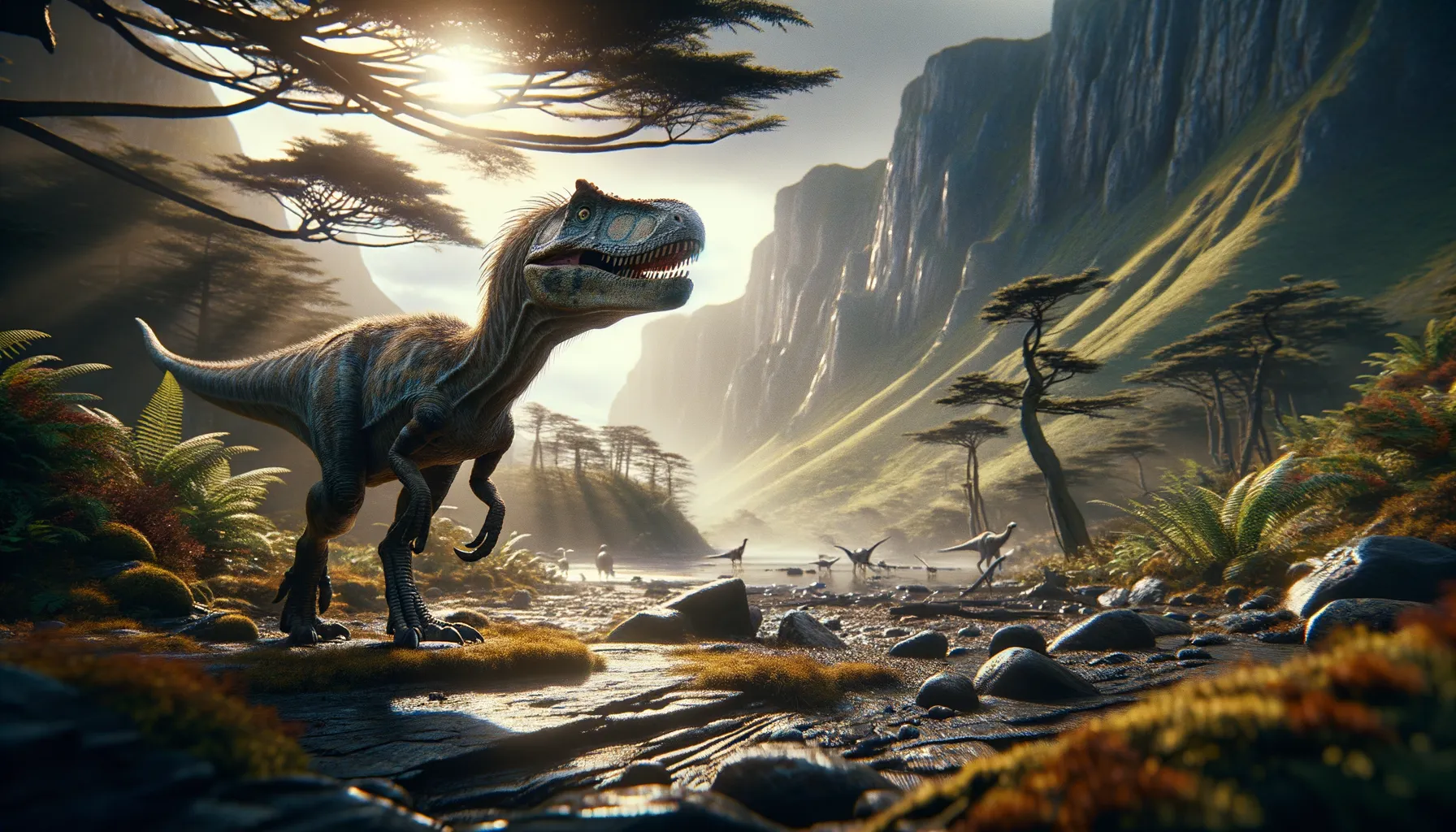
Dracoraptor
Swift predator of the Jurassic age!
Period
Jurassic
Length
Roughly 2 meters long from head to tail.
Height
Stood at about 1.5 meters tall.
Weight
Estimated to weigh around 100 kilograms.
Dracoraptor is a small, meat-eating dinosaur that roamed early Jurassic Wales around 200 million years ago. It represents one of the oldest known theropods in the UK and exhibits characteristics such as a lightweight frame and sharp teeth for hunting smaller prey. The discovery of its nearly complete fossil skeleton provided significant insights into early Jurassic ecosystems and dinosaur evolution. Dracoraptor’s anatomy suggests it was adept at hunting and scavenging, contributing to its niche as an early carnivorous dinosaur.
Diet
Dracoraptor primarily fed on small animals, such as insects and small vertebrates. Its sharp teeth indicate a diet specialized for flesh consumption, allowing it to efficiently process its prey.
Hunting
This dinosaur likely used its agility and speed to catch quick-moving prey. It may have relied on stealth and ambush tactics, taking advantage of its environment to approach unsuspecting targets.
Environmental challenges
As an early predator, Dracoraptor faced the challenge of competing with other small carnivorous dinosaurs for food. Environmental changes during the Jurassic period could affect the availability of resources, necessitating adaptability in both diet and hunting strategies. Predation pressure from larger carnivores also required vigilance and quick escape responses. The unstable weather patterns of the time might have influenced its territorial and migratory behaviors.
Speed
It had a moderate speed, capable of quick bursts.
Lifespan
Approximately 20 to 30 years in the wild.
First discovery
Discovered in Wales in 2014, identified in 2016.
Fun Facts
- Dracoraptor is one of the oldest known Jurassic dinosaurs and lived about 200 million years ago.
- The name Dracoraptor means 'dragon thief,' a nod to its discovery in Wales, where the dragon is a national symbol.
- Dracoraptor was a small, carnivorous dinosaur, estimated to be about 2.1 meters long.
- It is believed that Dracoraptor had sharp teeth and claws, indicating it was a meat-eater, likely preying on small animals.
- Fossils of Dracoraptor were discovered by brothers Rob and Nick Hanigan in 2014 along a cliff in Wales.
- Dracoraptor is a significant find because it provides insight into the early evolution of theropod dinosaurs.
- The discovery of Dracoraptor has helped scientists better understand the transition between the Triassic and Jurassic periods.
Growth and Development
Dracoraptor likely grew relatively quickly to reach its adult size within a few years, similar to modern-day reptiles. Juvenile dinosaurs may have been more vulnerable to predators, influencing their development rate and social behaviors. Fossil evidence suggests that young Dracoraptors would have benefited from parental protection or living in small groups for enhanced security.
Habitat
Dracoraptor lived in a coastal environment with access to both marine and terrestrial prey. The region would have been lush, supporting a variety of life forms that constituted its diet. Its habitat may have included forested areas where it could hide and hunt effectively. Seasonal changes in the Jurassic period would have driven Dracoraptor to adapt to varying climates and resource availability.
Interaction with other species
Dracoraptor likely competed with other small carnivores for food and territory, engaging in both aggressive and avoidance behaviors. It may have scavenged the remains left by larger predators, reflecting a flexible feeding strategy. Mutualistic relationships with other species could have included feeding opportunities on parasites from larger animals. The presence of larger herbivores might have shaped its predation strategies, prompting it to target weaker or isolated individuals.
Natural lifespan
Its natural lifespan might have reached up to 30 years.
Reproduction
Dracoraptor likely laid eggs in nests protected from predators and environmental elements. Communal nesting sites might have been used to ensure greater survival rates for the offspring. Parental care could have included guarding the eggs and occasionally feeding the hatchlings. The clutch size may have varied, with numerous eggs ensuring that at least some embryos survived to adulthood.
Social behaviour
Evidence suggests that Dracoraptor could have exhibited some level of social behavior, possibly forming small groups to improve hunting efficiency and protection. These groups might have consisted of family units or communal gatherings during certain seasons. Communication among individuals would have been beneficial, using vocalizations or physical displays to establish dominance, mating rights, and territorial boundaries. Solitary behavior would also have been common, particularly when competition for food was high.
Fossil locations
The first and most notable Dracoraptor fossils were found along the coast of Wales, making it a significant discovery for Jurassic paleontology in the UK. These fossils are among the oldest known dinosaur remnants in the region. The site provided a nearly complete skeleton, which offered a wealth of information for researchers. Its discovery has since encouraged further exploration for additional dinosaur fossils in the area.
